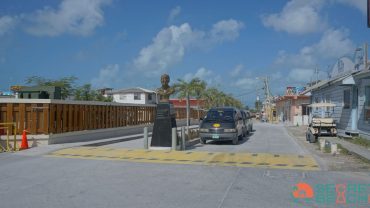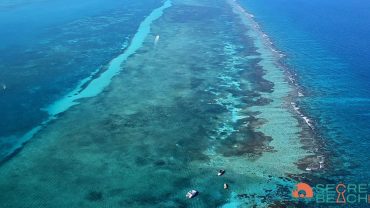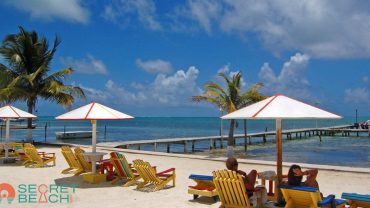Belize is a special place in the world with such cultural diversity. Whether you’re in a busy city like Belize City or in a small coastal village, you can hear a wide variety of Belize languages being spoken. Each language has stories that came up long ago. The diversity of cultures and Belize languages is one of the main treasures that Belize owes which helps the locals to learn more about different people’s lives.
Belize is a multilingual country with English as the official language, spoken by a minority. Spanish is spoken natively by 52.9%, while Belizean Creole (Kriol) is spoken by 44.6%. Three Mayan languages, Q’eqchi’, Mopan, and Yucatec Maya, are also spoken. Garifuna, an Arawakan-based language, has approximately 16,100 speakers, and 9,364 Mennonites speak Plautdietsch, an archaic Low Saxon language. Over 50% of Belizeans are multilingual, with “Kitchen Spanish” (a mix of Spanish and Kriol) used in northern towns. Spanish is taught in schools to non-native speakers, reflecting the country’s linguistic diversity. Join us on this journey as we explore the multiple Belize languages and experience its extraordinary diversity and unity.
English: The Official Language
Belize was a colony of Britain, and they popularized the English language as it was the main language. English is still considered the official language in this regard. This is an example of multicultural exchange: in this case it’s the government, schools, and business that provide the platform for bringing together people from different backgrounds. Almost everything in Belize, from a government meeting to news summaries and bulletins, is in English.
Kriol: A Vibrant Fusion
Kriol: An English-Based Creole
In Belize, people usually speak Kriol. It’s a unique communication tongue that originated from Black Africans, Europeans, and Native Americans in the past. It gives a visual representation of Belize’s vivid and diverse background. It is creatively blended with words from English, Africa, and the origins languages, and thus, draws a meaningful identity.
Code-Switching and Cultural Expression
Lots of people in Belize treat Kriol as much more than a mere language because it shows who they are and the place that they belong to. When it deals with a more serious situation, like at a job or a school, speaking regular English is a common practice. However, Kriol is very commonly used in casual situations such as spending time with best friends. As Kriol uses English at times and sometimes does not, it depends on who one is talking with and the situation they are in.
Spanish: A Lingua Franca of the Region
Spanish: Influence from Neighboring Countries
Belize also shares the border with its neighboring countries where Spanish is the native language of most of the people. Consequently, like in Mexico and Guatemala, many people in Belize also speak Spanish but mostly in places near the borders that these nations share.
Spanish and indigenous people, who are called Mestizos, have migrated to Belize together with others from the neighboring counties due to problems in their countries. That has affected various aspects of Belize’s language diversity. Lots of people in Belize are able to use English and also Spanish for communication across cultures.
Kitchen Spanish and Cultural Integration
In Belize, there is basically the regular Spanish and a simpler version like the “kitchen Spanish.” It is spoken mostly by people who are English speakers. It uses simple Spanish to reflect the way the nation embraces the diversity of Belize languages and cultures, contributing to the sense of uniqueness.
Mayan: Guardians of Ancient Heritage
Mayan Languages: Echoes of Ancient Civilization
In Belize, there are people who are descendants of the Mayans (the ancient civilization). Some of them still stay there today, they are keeping their old languages and customs. Local history has these indigenous languages preserved: Kekchi, Mopan, and Yucatec, to mention a few, and these are spoken mostly in rural areas. Despite the modern culture that is taking over everything, the languages of ancient Mayans represent the strength that their culture has continued to preserve over centuries.
Bilingualism and Cultural Heritage
A lot of the Mayan people can speak two languages; English or Spanish, as well as one that is native to them. The language is really important to them, because it in a way is a part of their identity. They use stories to teach their children about traditions and to pass on knowledge. Maya people in Belize demonstrate how rich Belizean cultures are by preserving their mother tongue.
Garifuna: Guardians of African Heritage
Garifuna: A Blend of African and Caribbean Cultures
The Garifuna people come from the Caribbean and are the descendants of African slaves and the indigenous Caribbean groups. The 18th century for them was a sad moment, they had to leave their home. In Belize, these people had a refuge where they preserved their dialect, music, and dances. Garifunas’ culture is meaningful and resonant which manifests their resilience even during the times when they have to overcome challenges.
Cultural Centers and Artistic Expression
In towns such as Dangriga, Punta Gorda, Hopkins, and Seine Bight the culture of the Garifuna is still alive with much enhanced traditions and practices. Here you get a chance to celebrate traditions once again with special ceremonies, delicious food, and lively music. The Garifuna language and customs enhance the cultural mixture of Belize countries, especially in Corozal.
German Influence: Mennonite Communities
Surprising to some, Belize is home to a significant Mennonite community, whose presence dates back to the 1950s. Speaking Low German or other Mennonite-German dialects, these communities preserve their traditions and way of life in isolated villages across Belize. From older times to modern agricultural practices, Mennonites influenced the society and the culture of Belize.
Cultural Enclaves and Traditional Practices
There are several places like Blue Creek where Mennonite communities are living peacefully. They are connected to their roots. They have a very simple lifestyle as per their cultural beliefs. Though Mennonites have a different culture and language, still they live with other people in Belize very peacefully. Their culture makes the cultural diversity of Belize more elegant.
Other Belize Languages: A Tapestry of Diversity
There are several languages spoken in Belize. Even the languages which are very far away from Belize. Some people speak Arabic and Chinese. Though there are not many people who speak these languages, still these languages have their influence in Belize. The linguistic diversity glorifies this nation. The contribution of each language is very important in Belize culture.
Embracing Linguistic Diversity
Belize’s linguistic diversity is celebrated as the pride of the nation. All the diverse communities of Belize have a bonding with each other through their language. For any nation, language is just as important as the backbone of the human body. Belize is a hub of various languages. Belize’s diverse language along with the harmony among the citizens makes it even more beautiful. Since visiting this country is very affordable, many tourists visit here and they have a lot of language options to communicate with locals.
Conclusion
The diverse historical background of Belize is reflected in the linguistic landscape of the nation. Every language shows centuries of migration, resiliency, and cross-cultural interchange, including the repetitive periods of Kriol to the ancient tongues of the Maya. Belizeans celebrate their ancestry, language, and culture while preserving their national identity by acknowledging linguistic variety. Belize languages will continue to inspire and foster pride as the country develops because they reflect the enduring spirit of unity among diversity.




Comment (0)